Test Bank For Pharmacology for Nursing Care 7th Edition by Richard A. Lehne
Test banks are developed as a teaching tool to help nursing students learn and understand pharmacology principles. The Test Bank For Pharmacology For Nursing Care 7th Edition By Richard A. Lehne contains a wealth of information that nursing students can use to study for exams and practice nursing care. The Test Bank includes multiple-choice, alternate-format, and essay questions.The Test Bank also provides answers and explanations for each question. In addition, the Test Bank For Pharmacology For Nursing Care 7th Edition By Richard A. Lehne offers a comprehensive review of pharmacology content. The Test Bank is an essential resource for any nursing student who wants to succeed in pharmacology coursework.Digital item No Waiting Time Instant DownloadISBN-13: 978-1416062493 ISBN-10: 1416062491
Test Bank For Pharmacology for Nursing Care, 7th Edition by Richard A. Lehne
Lehne: Pharmacology for Nursing Care, 7th Edition
Chapter 2: Application of Pharmacology in Nursing Practice
Test Bank
1.A patient with a history of hepatomegaly secondary to cirrhosis is admitted to a medical-surgical unit. Among the patient’s many medications, acetaminophen (Tylenol) is prescribed. The nurse understands that this drug should not be used in patients with impaired liver function. Which term describes the nurse’s understanding of the relationship between acetaminophen and its use in patients with impaired liver function?
|
a. |
An indication |
|
b. |
A precaution |
|
c. |
A relative indication |
|
d. |
An absolute contraindication |
ANS: D
An absolute contraindication refers to a pre-existing condition that precludes use of a particular drug under all but the most desperate circumstances.
An indication refers to the purpose for which a medication is given.
A precaution is a pre-existing condition that significantly increases the risk of an adverse reaction to a particular drug but not to a degree that makes it life-threatening.
A relative indication refers to the most likely reason a medication is given.
DIF:Cognitive Level: ComprehensionREF:pp. 6-7 | p. 10
TOP:Nursing Process: Assessment
MSC: NCLEX Client Needs Category: Physiological Integrity: Reduction of Risk Potential
2.The nurse reads the prescriber’s orders and prepares to administer a medication “as needed.” Which order would the nurse plan to implement?
|
a. |
Acetaminophen (Tylenol) 650 mg 1 PO q 6 hours |
|
b. |
Acetaminophen (Tylenol) 650 mg 1 PO q 4 hours prn |
|
c. |
Acetaminophen (Tylenol) 650 mg 1 PO stat |
|
d. |
Acetaminophen (Tylenol) 650 mg 1 PO BID |
ANS: B
Every 4 hours prn, means every 4 hours “as needed.”
Every 6 hours is a scheduled medication.
A stat order means immediately.
A medication ordered BID indicates twice daily.
DIF:Cognitive Level: KnowledgeREF:p. 8
TOP:Nursing Process: Planning
MSC: NCLEX Client Needs Category: Physiological Integrity: Reduction of Risk Potential
3.The nurse is caring for several patients and prepares to administer morning medications. Which high-risk patient should the nurse monitor most carefully after the drugs are administered?
|
a. |
The pediatric patient admitted with a broken arm |
|
b. |
The active elderly patient admitted with a right hip fracture |
|
c. |
The young adult patient with a history of kidney disease |
|
d. |
The 26-year-old female admitted with asthma |
ANS: C
The young adult with kidney disease is at highest risk due to the potential for toxicity of the medication as a result of urinary excretion problems.
The pediatric patient has no other physiologic indications that would affect administered medications.
The active elderly patient displays no other physiologic complications at this time that might affect administered medications.
The 26-year-old female has no other physiological indications that would affect administered medications.
DIF:Cognitive Level: ApplicationREF:p. 10
TOP:Nursing Process: Implementation
MSC: NCLEX Client Needs Category: Physiological Integrity: Reduction of Risk Potential
4.The charge nurse has just received report from another nurse, who is ill and going home. The nurse gave medications to his patients about 40 minutes ago. The charge nurse is prioritizing which patient should be seen first based on the nurse’s report. Which patient should the charge nurse assess first?
|
a. |
A patient with multiple allergies, just started on a new medication with complaints of pruritus |
|
b. |
A patient with a history of migraines and complaints of a mild headache |
|
c. |
A postoperative patient who had a total knee replacement (TKR) with complaints of leg pain rated as a 4 on a scale of 1 to 10, with 10 being the greatest amount of pain |
|
d. |
A patient on anticonvulsant therapy who is complaining of lethargy |
ANS: A
A patient with multiple allergies who complains of pruritus after beginning a new medication has the greatest chance of an allergic reaction, including anaphylaxis.
A mild headache would not be a priority in someone who has a history of migraines.
A rating of leg pain of 4 out of 10 would not be a priority for a postoperative patient.
Lethargy is an expected side effect in a patient taking anticonvulsants, which depress central nervous system activity; this, therefore, is not a priority.
DIF:Cognitive Level: AnalysisREF:pp. 7-8
TOP:Nursing Process: Assessment
MSC: NCLEX Client Needs Category: Physiological Integrity: Reduction of Risk Potential
5.The nurse is preparing to administer medications to a patient admitted with a left total knee replacement (TKR). As part of the preadministration assessment, the nurse would first
|
a. |
administer the medications with a full cup of water. |
|
b. |
check the patient’s arm band for allergies. |
|
c. |
monitor the patient for toxicity. |
|
d. |
perform a physical assessment. |
ANS: B
Checking the patient’s arm band before administration verifies allergies and is the only option, provided it is done before administration of medications.
A full cup of water is not relevant, because many patients take their meds with a sip of water, and this is not a preadministration assessment.
Monitoring the patient for toxicity would be an evaluation rather than a preassessment.
A physical assessment is not necessary unless the patient’s status changes, such as an inability to swallow.
DIF:Cognitive Level: ApplicationREF:pp. 6-7
TOP:Nursing Process: Assessment
MSC: NCLEX Client Needs Category: Physiological Integrity: Reduction of Risk Potential
6.Prior to the administration of penicillin, a nurse reviews medication literature regarding precautions associated with penicillin. For which patient would the nurse most likely consider these precautions warranted?
|
a. |
A patient who has a history of anaphylaxis from promethazine (Phenergan) |
|
b. |
A patient who has a history of bronchitis and asthma |
|
c. |
A patient who reports an allergy to sulfa-based agents |
|
d. |
A patient who reports a history of a mild rash from penicillin taken 7 years ago |
ANS: D
Even a minor allergy to penicillin warrants precautions during administration, because a more severe allergic reaction may occur.
Promethazine is not related to penicillin, therefore no precautions are necessary.
A history of bronchitis and asthma would not be prohibiting factors preventing the use penicillin.
A patient who has a known allergy to sulfa-based drugs does not have a cross-sensitivity to penicillin drugs, therefore no precautions are necessary.
DIF:Cognitive Level: AnalysisREF:p. 6
TOP:Nursing Process: Planning
MSC: NCLEX Client Needs Category: Physiological Integrity: Reduction of Risk Potential
7.A nurse on a busy orthopedic unit is preparing to administer morning medications. Which aspect of the assessment would be most important prior to the administration of an antihypertensive agent PO?
|
a. |
Early signs that an adverse reaction is occurring |
|
b. |
Route by which the drug is to be administered |
|
c. |
Patient’s blood pressure prior to administration |
|
d. |
Patient beginning complaints of a headache |
ANS: C
Blood pressure measurement is imperative prior to the administration of an antihypertensive agent to prevent potential life-threatening complications.
The nurse cannot determine early signs of an adverse reaction if the medication has not yet been administered.
The route by which the drug is administered is not a priority in this question, because there is no indication the patient is having difficulty swallowing.
The patient’s beginning complaints of a headache may be indicative of hypertension, which would be validated by taking the blood pressure, the priority assessment.
DIF:Cognitive Level: ApplicationREF:p. 10
TOP:Nursing Process: Assessment
MSC: NCLEX Client Needs Category: Physiological Integrity: Reduction of Risk Potential
8.A nurse is preparing to administer medications. Which patient would the nurse consider to have the greatest predisposition to an adverse reaction?
|
a. |
A 30-year-old male with kidney disease |
|
b. |
A 75-year-old female with cystitis |
|
c. |
A 50-year-old male with an upper respiratory tract infection |
|
d. |
A 9-year-old child with an ear infection |
ANS: A
The individual with impaired kidney function will be at risk of having this drug accumulate to a toxic level due to potential excretion difficulties.
Cystitis is an infection of the bladder and not usually the cause of excretion problems that might lead to an adverse reaction from a medication.
A respiratory tract infection would not predispose a patient to an adverse reaction, because drugs are not metabolized or excreted by the lungs.
A 9-year-old child would not have the “greatest” predisposition to an adverse reaction simply because he is a child; nor does an ear infection put him at greater risk.
DIF:Cognitive Level: AnalysisREF:p. 9
TOP:Nursing Process: Planning
MSC: NCLEX Client Needs Category: Physiological Integrity: Reduction of Risk Potential
9.A nurse is providing education to a patient preparing for discharge from the clinic. The nurse understands that the best way to promote compliance in the patient going home on a new medication is to
|
a. |
provide a video for the patient to watch at home. |
|
b. |
provide a pamphlet on the new medication. |
|
c. |
monitor the patient for an adverse drug response prior to discharge. |
|
d. |
ask the patient to restate the instructions and verify understanding. |
ANS: D
Having the patient to restate the instructions allows the nurse to verify patient understanding.
The nurse will not be able to assess whether the patient learned from the video, because the patient will watch it at home after discharge.
The nurse will not be able to assess whether the patient actually read the pamphlet and understood its contents.
Monitoring the patient does not ensure compliance with the medication and is not indicated in this situation.
DIF:Cognitive Level: ApplicationREF:p. 7
TOP:Nursing Process: Evaluation
MSC:NCLEX Client Needs Category: Physiological Integrity: Pharmacological and Parenteral Therapies
10.A female patient comes to the clinic and is prescribed tetracycline. She tells the nurse, “I’m allergic to tetracycline. I always get a yeast infection when I take it.” The nurse’s best response would be
|
a. |
“A yeast infection is not actually an allergic reaction. You can safely take the drug.” |
|
b. |
“Tell me about other reactions or changes you experience when you take tetracycline.” |
|
c. |
“I will make a note in your chart so we will avoid this problem in the future.” |
|
d. |
“Yeast reactions are a common problem for women, but they are not related to medications.” |
ANS: B
The nurse should further investigate whether the patient is experiencing any other adverse effects of the drug, note them in the chart, and report them to the prescriber.
The nurse should not tell the patient that she can safely take the drug, because this disregards the important information the patient has provided with regard to previous reactions to tetracycline.
Simply making a note in the chart is not enough for the nurse to do in relation to a potential drug reaction. Further assessment is required by the nurse.
Yeast infections may occur with tetracyclines, therefore this option is a misstatement.
DIF:Cognitive Level: ApplicationREF:p. 11
TOP:Nursing Process: Implementation
MSC: NCLEX Client Needs Category: Physiological Integrity: Reduction of Risk Potential

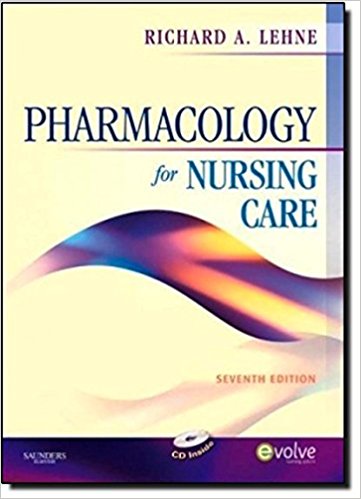
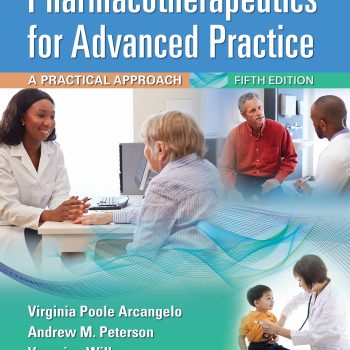
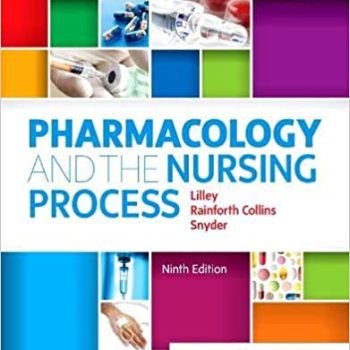
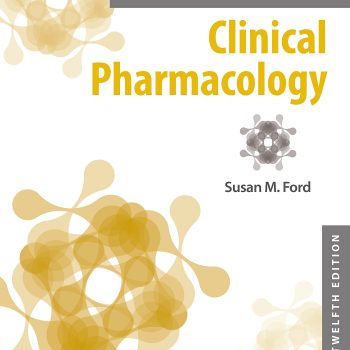
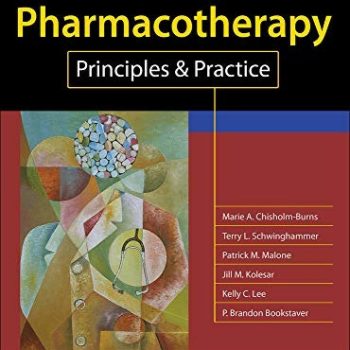
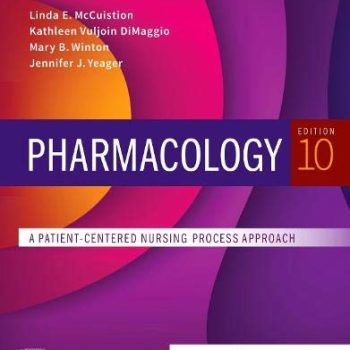
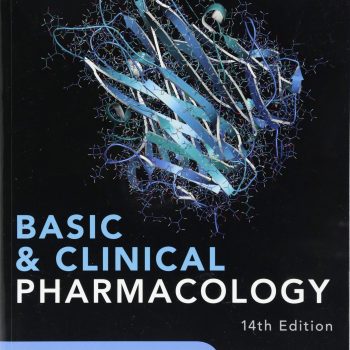
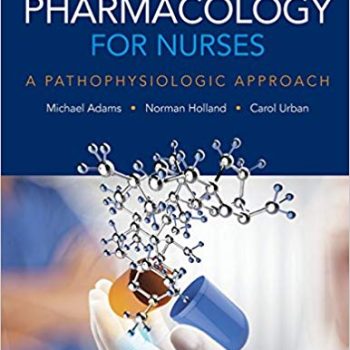
Reviews
There are no reviews yet.